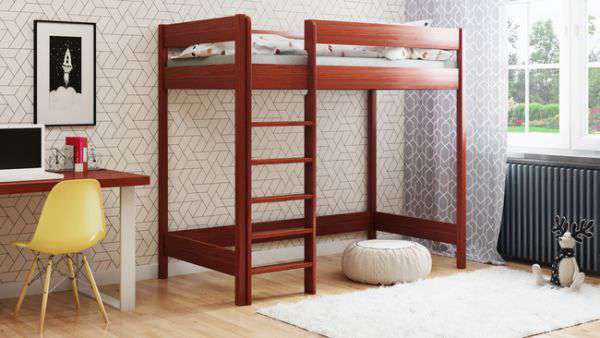Expert Bunk Bed Crafter
Horizontal Murphy Bedstead Diagrams - How to Select the Best Design Drawings

Miter joints hide end grain and look more refined. Add glue to the joints and make sure corners are square. Also, leave some room from top shelf to ceiling. The length of spacers is determined by your track mounting method, whether there is trim around the door or at the floor that you must clear, and the thickness of your door. Drill pilot holes into the ends of middle brace and bottom brace, and then screw in hanger bolts. They must not have any bow, but they could have a slight (https://woodcraftdiagrams.com/diy-rustic-bed-frame-plans-blueprints) crook or crown. Our version is made of red oak that's been stained with Watco golden oak finishing oil and topcoated with satin polyurethane.
Start with a list of available cabinet widths. Fussy carpenters often ease sharp edges with sandpaper or a file. Then just hold the parts together and drive in screws. To attach the top, drive screws from inside the cabinet, through fillers and into top. Put a dab of construction adhesive in the middle of each bottom dado and tap shorter pieces into the longer pieces. Then, we blocked up the arches so their ends were flush with top surfaces of 1 x 6s and clamped them in place. The only downside to this method is that slot isn't always centered on part, so you have to pay close attention to orientation as you craft the slots and assemble bench.
Doing so gives tabletop its fan-like shape. Scrub the leaves (you can check here) out of their imprints with a stiff plastic brush. Drill a hole in the handle and suspend it from a wire or dowel so that bristles aren't resting on bottom of container. Stack pieces on top of each other with newly sawn edges facing same way. Cut it in half again and you'll be very close to 22 degrees, a good angle for steeling. Be sure jig is screwed to the workbench. Pry against form base rather than concrete. If you have patience to experiment, you could buy a couple of cans of stain and mix them to create your own.
So it seems to make sense to start building furniture and other things without glue or fasteners now so right thinking and habits will be in practice already when the time comes. Use a scrap to elevate the compass to the same height as the board you're marking. Do the same thing along backside of front rafters. The tapered side is the only one that gets sharpened. Countersink hole and screw the ends to rod. After marking notch locations, separate three sections. Make sure to wear safety goggles, hearing protection and a good-quality dust mask. And the router is the tool to use to rip these joints.
Cut drawer runners to size and glue them in place. I don't want the sun to bake the wood-fast, uneven drying leads to warping. All pours contain trapped air, which will leave holes in the finished top unless you work them out. Rip cleat to width and then crosscut it to length. Bore holes for the bungee cord through both panels. Clamp or tack the board to sawhorses and slide saw and jig full length of board. For easier cleanup, toss a coarse sanding sponge into your water bucket. Vacuum project and then wipe it down with a clean cloth moistened with mineral spirits to remove any residue.
And with that style you'll look pretty impressive when your guests watch you sharpen your knife before carving up roast. Spread a thin layer of carpenter's glue on face of smaller piece. Cut accurate dadoes without a dado blade by making successive passes over the blade. Directly below hole is a recycling bin resting on a rollout shelf. If you just have grass, you'll soon have a muddy path. Place a small piece of timber between slats, in order to get consistent gaps. Mount middle brace to back slats at this line, just as you attached the other brace. Most home centers and hardware stores carry only common bits.
You don't have to wait for it to dry completely. These pieces aren't essential, but they give unit a clean, finished look by hiding all seams. Notch corner stud to fit around the beam so that it's flush with beam trimmer stud. Use durable lumber, designed for outdoor use, such as cedar, pine or redwood. Smooth curve with a drum sander or sanding block. It's a challenging and time consuming process, but it's also rewarding and there is no greater sense of pride than showing off dovetails you rip by your own hand. Peel off tape before glue dries. This adhesive film, which architects use for speedy design transfers, also works great for transferring scroll saw patterns to wood you're cutting.
This finish goes on like a hand-rubbed oil finish and won't pool, bubble or drip to leave mini messes to sand off when it's dry.
